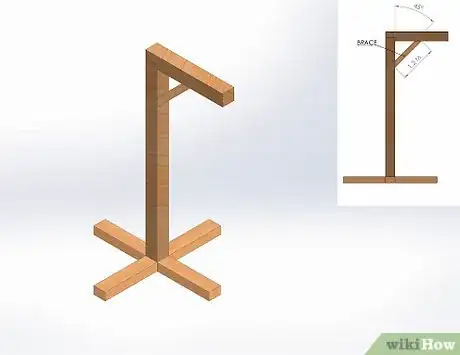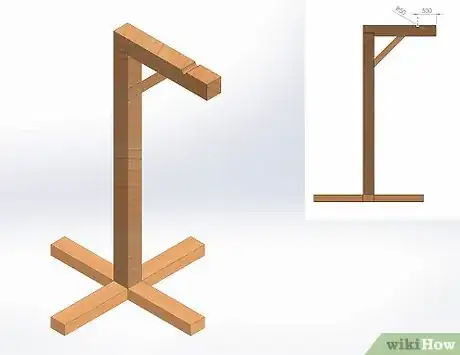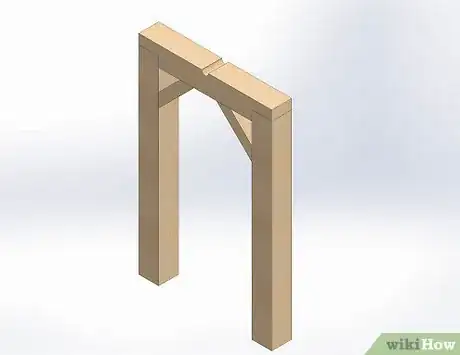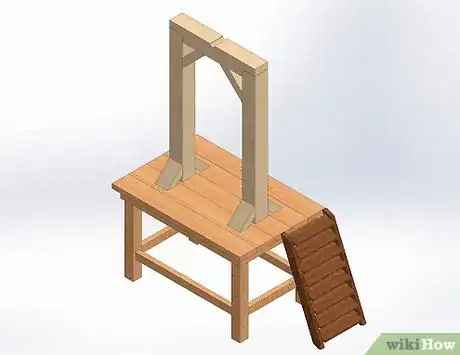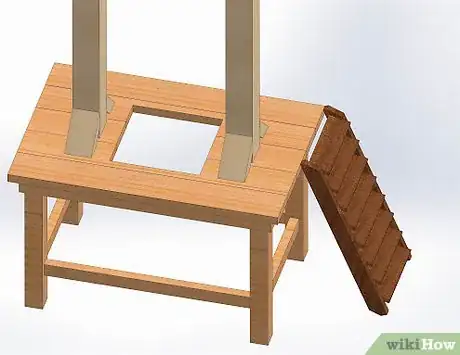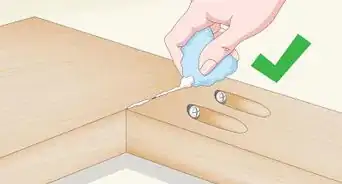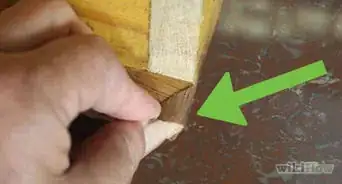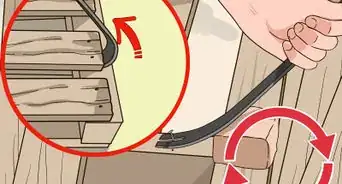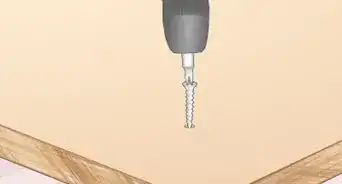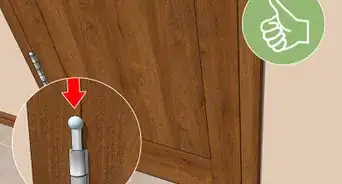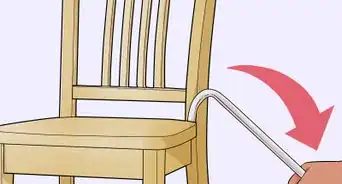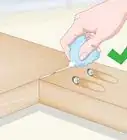wikiHow is a “wiki,” similar to Wikipedia, which means that many of our articles are co-written by multiple authors. To create this article, 32 people, some anonymous, worked to edit and improve it over time.
This article has been viewed 162,230 times.
Learn more...
Gallows are tools made out of wood to resemble a frame, typically used for hangings and executions. There are several types of gallows, from a simple inverted 'L' shape, to the more complex full-frame-and-stand-with-trapdoor designs.
Gallows making is actually a craftsman art, and ever since gallows became less popular, the number of people who know how to make quality gallows has been waning. Collecting gallows is also a form of art collecting, primarily based more in Europe.
If you are considering suicide, call or text the National Suicide and Crisis Lifeline at 988.
Note: Building and or operating a gallows may be illegal in your jurisdiction. Know the law before proceeding.
Steps
Inverted 'L' Gallows
An Inverted 'L' is the simplest form of gallows aside from a rope attached to a tree. The Inverted 'L' isn't usually tall enough to guarantee proper neck snappage, so strangulation usually is the method of death. Inverted 'L' gallows typically were made for small town executions, and were easily transportable. For that reason, they were usually just a simple upside down 'L' shape. Because they were made so commonly and quality wasn't usually that much of a concern as long as it didn't break under the convict's weight, the Inverted 'L' gallows generally are worth far less to collectors than the Hanging Frame.
-
1Use a stout piece of lumber, at least 3m long, preferably between 4m and 5m. Make sure that it is at least 20cm (8") wide, and is fashioned as a square or rectangle.
-
2Attach another piece of lumber of a similar type but 1-2m long to the top of the first piece of lumber to make an 'L' shape.Advertisement
-
3(Optional) - Attach 4 pieces of lumber to the end of the long piece of lumber opposite to the 1-2m long piece. The 4 pieces can be as long as you want, and attached in the form of a cross, with one on each side of the square diameter of the pole. This is for stability, and can be used as a stand when braces are attached, or as an anchor when buried deep enough.
-
4Add a brace to the 'tail' of the 'L' (the 1-2 m long part) at about 45º to connect to the main pole. This helps brace it and prevent it from breaking.
-
5Notch a grove onto 'tail' of the 'L' part, about half a metre from the end. This is where you will loop the noose.
-
6Dig a hole deep enough and stand up your gallows. The optional 'cross-bar anchor' while help greatly in providing support for it.
- Operation - Your victim stands on a stool/chair, and the noose is looped around the neck. When the time is ready, the stool is kicked away.
Hanging Frame (full-frame-and-stand-with-trapdoor design)
This design is much easier to use, much more efficient to use, and gives the person being hanged somewhat more dignity than the Inverted 'L' design. The complete Hanging Frame design is what collectors are looking for.
-
1Make the floor out of planks. This floor should be around 3m by 2m for a one person gallows.
-
2Make the floor elevated 2-3m by making legs and braces for it, so it resembles a stand or a large table. Add a staircase for convenience, or you can keep it as is and use a ladder every time.
The Hanging Frame
-
1Take two 3m long posts/poles that are fashioned into square diameters (similar to that as described in the inverted 'L' design) and attach a third pole 2m long across the top of them both. You can add two braces from the center of the third post attaching to the other two posts at a 45º angle.
-
2Cut a notch into the top of the third post for your noose.
Putting them Together
-
1Attach the posts to the top of the stand. If you use longer 5m posts, you can run the posts through the floor of the stand to the ground. Make sure that they are still attached though.
-
2On the floor of the stand, directly underneath the cut notch, cut out a 1m by 1m square. This will be your trapdoor.
Community Q&A
-
QuestionHow do I hang a gallows?
 Community AnswerRefer to the "How to tie a noose" article, tie the end of the rope around the top of the gallows, and put the noose arouns someones neck. Then pull the lever.
Community AnswerRefer to the "How to tie a noose" article, tie the end of the rope around the top of the gallows, and put the noose arouns someones neck. Then pull the lever. -
QuestionWould a tree work as well as a gallows?
 Community AnswerYes, a tree would work just as well.
Community AnswerYes, a tree would work just as well. -
QuestionWhy would you you need to know how to build a gallows? Hopefully it's not for killing anyone!
 Community AnswerIt could be useful for demonstrations at renaissance Festivals, or reenactments. The article explains this clearly.
Community AnswerIt could be useful for demonstrations at renaissance Festivals, or reenactments. The article explains this clearly.
Warnings
- Gallows may be considered weapons in some jurisdictions.⧼thumbs_response⧽
- You may be convicted of murder if you hang someone.⧼thumbs_response⧽
- If you aid someone attempt suicide by building them the gallows for that purpose, you may be convicted of assisting suicide or murder. Think carefully.⧼thumbs_response⧽
- People in your neighbourhood may ostracize you and think you as strange for building a gallows.⧼thumbs_response⧽
- If you can, work with someone when standing up the Inverted 'L' gallows, or attaching the 'frame' to the Hanging frame gallows. This is because it will be very heavy, and if working alone, if it topples on you, you may have no one to call for help, especially if you are trapped underneath.⧼thumbs_response⧽
- Please only use the gallows for hangings if you are a licensed executioner in a country/jurisdiction where hangings are legal, and with proper permission also; otherwise you risk prosecution.⧼thumbs_response⧽
- Vigilante Justice via gallows is illegal in most if not all countries.⧼thumbs_response⧽
- Never tie a rope around your neck or someone else's unless you are able to do so safely.⧼thumbs_response⧽
- If you are considering suicide, call or text the National Suicide and Crisis Lifeline if you are in the United States at 988.⧼thumbs_response⧽



